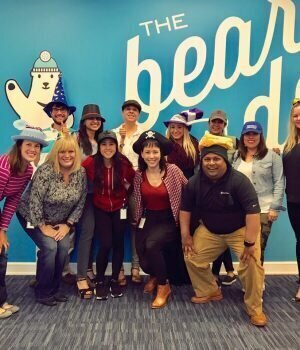The technology-driven landscape of today is omnivorous. That’s right, omnivorous.
At least that’s what every pundit out there has been saying: “software is eating the world”, “cloud storage is eating the world alive” (Google actually auto-completes that) and, of course, “open source is eating the software world”.
Here’s the thing: open source has already eaten, and it’s time for business leaders to digest that.
Earlier this year, Lauren Nelson and Paul Miller from Forrester published a paper titled “Open Source Powers Enterprise Digital Transformation”, where they explore the pervasiveness of open source software in today’s enterprise. For those that consider themselves open source advocates, this is a welcome departure coming from an analyst, but the fact that Forrester is using actual data from CIO surveys makes it almost groundbreaking.
Because, at its core, what the research shows is that open source is no longer in the realm of the individual practitioner, the academia, a runaway government, technology startups or cloud infrastructure providers. It’s in each of them, in all of them, and beyond them. Open source is also in the enterprise, gaining traction rapidly and not just as a device to cut on costs and provide the CIO with leverage.
We can argue, like Matt Asay at InfoWorld does, that a lot of this growth will come out of “dire necessity”. Simply put, open source is driving technology innovation in areas where it was previously just an option. Or, conversely, there are use cases and scenarios where open source is the only option, or at least the reference option.
But let’s not argue why “the rest” of decision-makers aren’t acknowledging this today.
Instead, let’s study what has changed: open source has been around for a long time and its benefits are well understood in the industry, yet the enterprise adopts open source not just because of its costs implications. What’s in between? The key to digital transformation, that is.
First of all, there’s demographics.
Decades of open source discussions in academia have yielded an entire generation of tech talent whose workplace survival skills are hinged on open source technologies.
Not only that, but the natural exposure to technology that is equally important to developers as it is to IT operations (like Linux, Python, Docker and so many other open source technologies that appeal to pretty much everyone in the IT spectrum) has also made open source a de facto reality in the DevOps trend that has set a new standard for delivering value out of IT. Organizations (both for profit and non profits) have realized that an open source strategy is a prerequisite to attracting, developing and retaining that demographic.
There’s, of course, agility.
But agility doesn’t come from the open source technology itself, but from the empowering experiences when mixed with cloud computing or anything that approaches a self-service model, like the ability to run containers or operate in platform-as-a-service (PaaS) model.
This means, for example, that both developers individually as well as IT as a whole can now use open source in the cloud to accelerate development and testing, fail fast and explore new technologies for comparatively nothing more than just noise in the bottom line. This is especially true for container-based microservices architectures, extending Web applications to mobile platforms, building Big Data pipelines and exploring machine learning.
And finally, there’s multi-stakeholdership.
The bilateral relationships of the past (IT Vendor-Enterprise, Dev-Ops, IT-line of business) have become more sophisticated. You could almost say omnivorous. Now, the business can talk to DevOps directly, and the IT organization can talk with both vendors in the open source community (projects that are used) as well as with communities formed around technologies that are open sourced.
The vendor relationship is multilateral and even chained – small system integrators and consulting organizations can daisy-chain capabilities from other companies and professionals that bring the subject matter expertise.
What this means is that the value chain suddenly becomes evident to IT, and this network effect means that IT starts accruing skills and expertise that eventually add up to the organization’s digital transformation: customer centricity, data-driven experimentation and extreme agility.
This ultimately helps companies be more competitive and accommodate growth.
It is when you put together people, culture and impact that you start to understand the value open source brings to the enterprise, and its role in its digital transformation. We argue that this realization is what will drive most of the growth in enterprise interest for open source solutions in the next 18 months of the current economic cycle.
But it won’t be easy: the open source ecosystem is interdependent with the broader technology ecosystem.
We live in the era of startup ISVs (independent software vendors) that build fantastic things with open source, but we could be living in the era of multivalent system integrators, or the individual guru, or the government open source policymaker. We also live in the era of foundations, and of the diminished role of standards bodies. And we live in the era of the cloud, of consumer access explosion and Internet-scale everything.
All of those moving pieces make this a very interesting space, and one that business leaders should be watching closely.
A simple way to get started?
Read what John Mark Walker, Director of Open Source Products at EMC, has to say about an open source program office. And then, whether you lead a tech or non-tech startup, a medium or large enterprise, a non-profit or a government organization or something else altogether, make sure a business decision maker is sitting in that office. Because, ultimately, you might not get to decide to what extent open source eats your organization, but how it helps you transform it is entirely up to you.
For more business tips, check our entrepreneurship section section and subscribe to our weekly newsletters.






